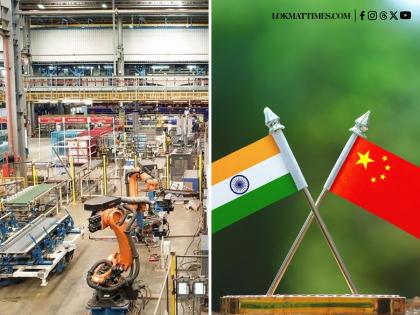Make in India: Investor Shankar Sharma Exposes Ground Reality After Visiting Slum in Mumbai
By Lokmat English Desk | Updated: April 14, 2025 12:13 IST2025-04-14T12:13:49+5:302025-04-14T12:13:59+5:30
While visiting a slum in Mumbai, he believed he had discovered evidence of grassroots creativity. He enquired about the making of the well-made exercise equipment he saw on display at a small workshop. When he asked the owner if the equipment was really manufactured there, he got a shocking but honest answer.

Make in India: Investor Shankar Sharma Exposes Ground Reality After Visiting Slum in Mumbai
The ‘Make in India' initiative was implemented to give brands a global platform for manufacturing goods. This initiative started in 2014. The aim was for foreign companies to set up factories in India and manufacture goods. Giving a reality check about this initiative, veteran investor Shankar Sharma recently shared his personal experience on social media. He posted on X how he visited a factory in Mumbai’s slum and got to know the reality of the ‘Make in India’ initiative.
While visiting a slum in Mumbai, he believed he had discovered evidence of grassroots creativity. He enquired about the making of the well-made exercise equipment he saw on display at a small workshop. When he asked the owner if the equipment was really manufactured there, he got a shocking but honest answer. Taking to x, he shared details of his visit and wrote, “Yesterday, I went to a slum area in Bombay, to get a special leg work out machine crafted. The guy was sitting in a grimy, cluttered shop with lathes, drills, etc. Showed me a catalog and said "I can deliver you such stuff". They were amazing looking, top quality. I happily thought " We are on the cusp of mfrg boom finally". I asked " You can really make me this??" He said : "Sir, I import from China and assemble it here. Their quality, finish, look, is simply unmatchable".”
Yesterday, I went to a slum area in Bombay, to get a special leg work out machine crafted.
— Shankar Sharma (@1shankarsharma) April 13, 2025
The guy was sitting in a grimy, cluttered shop with lathes, drills, etc. Showed me a catalog and said " I can deliver you such stuff". They were amazing looking, top quality. I happily…
Many internet users were shocked just like Sharma. An X user wrote, “I've said this a dozen times: We can't even make everyday items like nail clippers, nose hair trimmers, luggage and bathroom weighing scales, TSA locks, clip-on macro lenses for mobiles, selfie sticks, etc. to the quality that China does. Car, electronics toh door ki baat hai.” Another user wrote, “And that’s why “Make in India” isn’t enough—we need to master design and finish too.” Another user sharing his experience wrote, “In 2022, a repair shop guy told me that for a consumer electronic brand from Goa, even the outer boxes and cartons with Make in India logo come printed from China. Everything was just packed there.”
This occurs at a time when many nations, particularly the US, are searching for alternative manufacturing locations to reduce their reliance on China. This change felt essential because of the COVID-19 outbreak and the US-China trade conflict.
The time appears to be ideal for India to take action, as the US has raised its duties on Chinese imports to as high as 145%, but India is not subject to similar trade restrictions. However, the reality on the ground paints a different picture.
The way factories are constructed and permitted to function in India is one of the primary issues. A study by Prosperiti that demonstrates how difficult it is to establish a factory in several Indian states is included in the Economic Survey for 2023–2024. Wide parking areas, plenty of space between buildings, and restrictions on the size and height of enterprises are all mandated by local regulations.
Also Read: Mumbai Local Train Update: Commuters To Face Slower Rides on Bandra-Mahim Stretch This Week
Due to these regulations, small factory owners frequently have to give up as much as 90% of their property in order to comply with construction laws. There is hardly any room left for a plant to be operated. In contrast, nations like the Philippines, Singapore, and Hong Kong make considerably better use of their industrial land, allowing firms greater latitude in their expansion.
Open in app